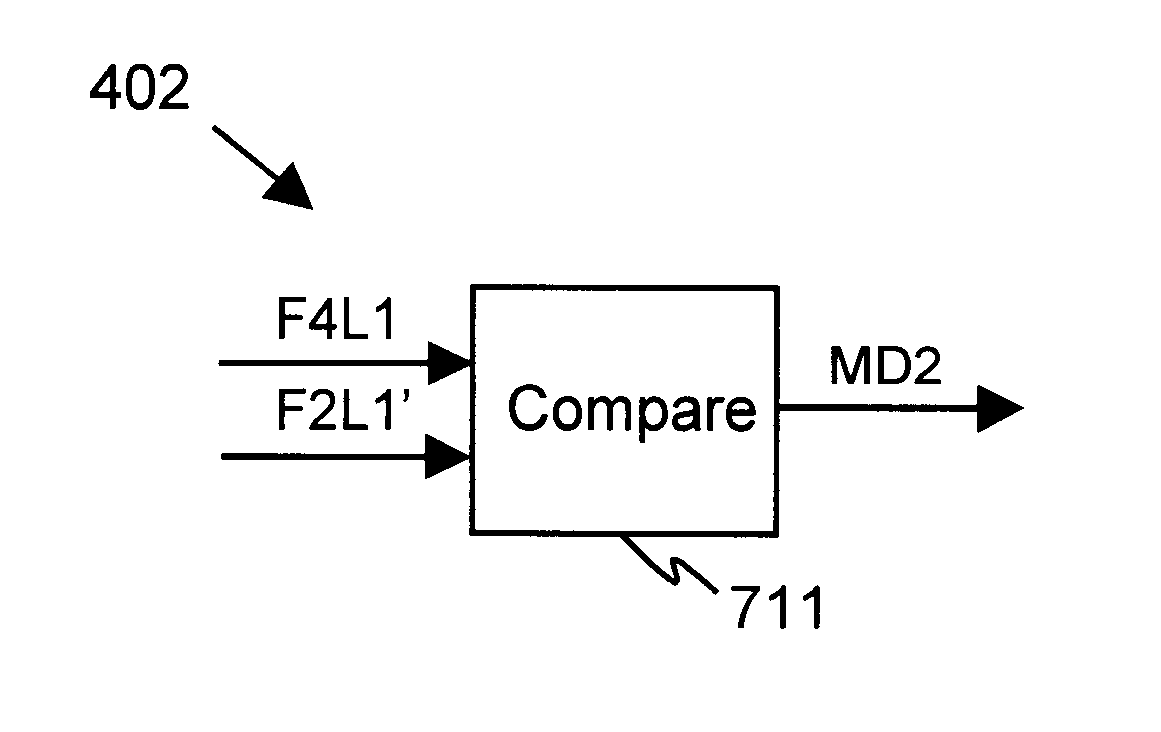Apparatus and methods for down-conversion video de-interlacing
- Summary
- Abstract
- Description
- Claims
- Application Information
AI Technical Summary
Benefits of technology
Problems solved by technology
Method used
Image
Examples
Embodiment Construction
[0045]In providing for converting an interlaced video datastream to a down-conversion de-interlaced form suitable for progressive-input coding, the present invention departs from conventional direct summary video manipulation. Instead, conversion is conducted adaptively in accordance with determined motion characteristics of received image portions.
[0046]For clarity, conversion is discussed in accordance with a preferred integrated circuit (“IC”) encoder implementation. In such implementation, a converter according to the invention is provided as a pre-processor stage or sub-stage of an encoder that is capable of MPEG-1 and MPEG-2 support. The converter is enabled (e.g. via datastream recognition / enable-control) for providing higher-quality MPEG-1 encoding.
[0047]Those skilled in the art will appreciate, however, in view of the teachings herein that the invention is also applicable in a separated or integrated manner to various other implementations and / or systems. For example, the i...
PUM
 Login to View More
Login to View More Abstract
Description
Claims
Application Information
 Login to View More
Login to View More - R&D Engineer
- R&D Manager
- IP Professional
- Industry Leading Data Capabilities
- Powerful AI technology
- Patent DNA Extraction
Browse by: Latest US Patents, China's latest patents, Technical Efficacy Thesaurus, Application Domain, Technology Topic, Popular Technical Reports.
© 2024 PatSnap. All rights reserved.Legal|Privacy policy|Modern Slavery Act Transparency Statement|Sitemap|About US| Contact US: help@patsnap.com










